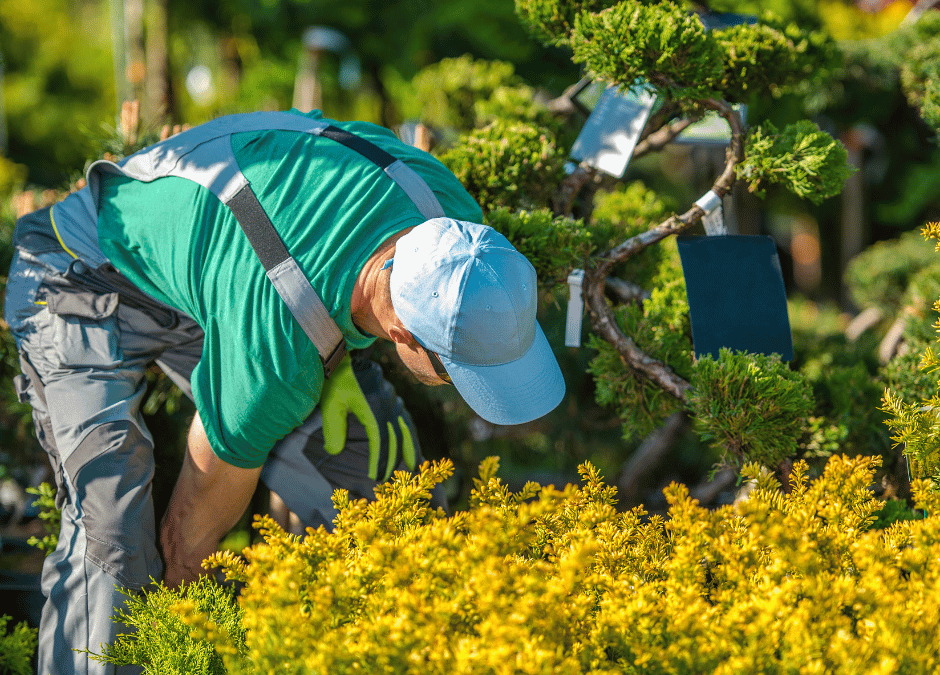Choosing the right plants is essential for creating a successful landscape design. At Douglasville Landscape Design, we provide expert guidance to help you select plants that will thrive and enhance your outdoor space. This article offers detailed tips and tricks designed to assist you in making informed decisions that will beautify your garden and improve its functionality. With our expertise, you can create a stunning, cohesive landscape that reflects your style and meets your functional needs.
Understanding Your Garden’s Climate and Soil Type
Understanding your garden’s specific climate and soil conditions is crucial for selecting appropriate plants. Different plants require different environmental conditions to thrive. By identifying your local climate zone and analyzing your soil type—be it clay, loam, or sandy—you can choose plants that are best suited to your garden’s conditions. This strategic selection leads to healthier plant growth and reduces the need for excessive maintenance.
Analyzing Sunlight and Shade in Your Yard
Effectively managing the sunlight and shade in your yard is vital for plant health. Assess the patterns of sun and shade throughout the day to determine which areas receive full sun, partial shade, or full shade. This knowledge allows you to place each plant in the optimal location, ensuring it receives the appropriate amount of light for growth, thereby maximizing the health and vigor of your garden.
Choosing Plants That Complement Your Lifestyle
Choosing the right plants for your lifestyle ensures that your garden not only looks beautiful but is also manageable and enjoyable. Consider these key tips when selecting plants to ensure they align with your daily life and gardening preferences.
- Assess Maintenance Requirements: Choose plants that match the time you can dedicate, with low-maintenance varieties for busy lifestyles and more demanding plants for avid gardeners.
- Consider Pet and Child Safety: Opt for non-toxic and sturdy plants if your garden is accessible to pets or children.
- Account for Allergy Sensitivities: Select hypoallergenic plants to minimize the risk of allergies among household members.
- Choose Functional Plants: Incorporate edible plants like herbs and vegetables if you enjoy cooking and want functional elements in your garden.
- Opt for Year-Round Interest: Select plants that provide visual interest throughout all seasons to ensure year-round attractiveness.
- Match Plants to Activity Areas: Use robust plants in high-traffic areas to withstand frequent interaction, such as grasses and groundcovers for play areas.
Understanding how to match plants with your lifestyle not only enhances your garden’s appeal but also makes its upkeep more practical. By following these tips, you can create a garden that is tailored to your personal needs and enjoyments, making it a true extension of your home lifestyle.
Selecting Plants for Year-Round Interest
Create a visually appealing garden all year round by selecting a diverse mix of plants. Choose species that offer varied blooming cycles, interesting foliage, and different colors to ensure your garden remains vibrant through every season. Incorporating evergreens can provide a constant backdrop of green, complemented by the seasonal colors of flowering plants.
The Role of Native Plants in Your Garden
Integrating native plants into your landscape design is environmentally sustainable and beneficial for local wildlife. These plants are adapted to the local climate and soil, which reduces the need for water and chemical treatments. Native plants also support local ecosystems by providing habitats and food sources for birds, bees, and butterflies, enhancing the ecological health of your garden.
Using Plants for Privacy and Noise Reduction
Utilize plants as natural solutions for enhancing privacy and reducing noise in your garden. Tall shrubs and dense trees are particularly effective in blocking noise and creating secluded retreats within your outdoor spaces. Opt for species like bamboo, hollies, or evergreens, which grow tall and dense, forming natural barriers that are functional and add aesthetic value to your landscape. These plants provide a serene and private atmosphere, transforming your yard into a peaceful haven.
Incorporating Color and Texture for Visual Impact
Incorporate a variety of colors and textures in your landscape design to create a dynamic and engaging garden. Mixing plants with different leaf textures and colors adds depth and interest, enhancing the garden’s visual appeal. Consider using soft grasses alongside rough-textured shrubs or bright annuals next to perennial greens to provide contrasts that catch the eye. This strategic variety beautifies your garden and makes it a more stimulating and inviting outdoor environment for everyone to enjoy.
Water-Saving Tips for Plant Selection
Select drought-resistant plants to ensure your garden remains lush and vibrant, even in arid conditions. Plants like succulents, native grasses, and certain perennials are particularly well-suited for dry climates as they require minimal watering. Integrating these plants into your landscape helps conserve water and reduces your garden’s overall maintenance needs. Additionally, mulch should be used around these plants to reduce water evaporation further and keep the soil moist longer.
Contact Us for Professional Landscape Design Services
Selecting the right plants for your landscape is an art that combines horticultural knowledge with aesthetic sensitivity. Douglasville Landscape Design is your partner in navigating this complex but rewarding process. Our experts are committed to helping you choose plants that will thrive in your specific environmental conditions and meet your lifestyle needs. By working with us, you can transform your outdoor space into a vibrant, healthy, and beautiful extension of your home. Contact us today to take the first step towards a more beautiful tomorrow.
